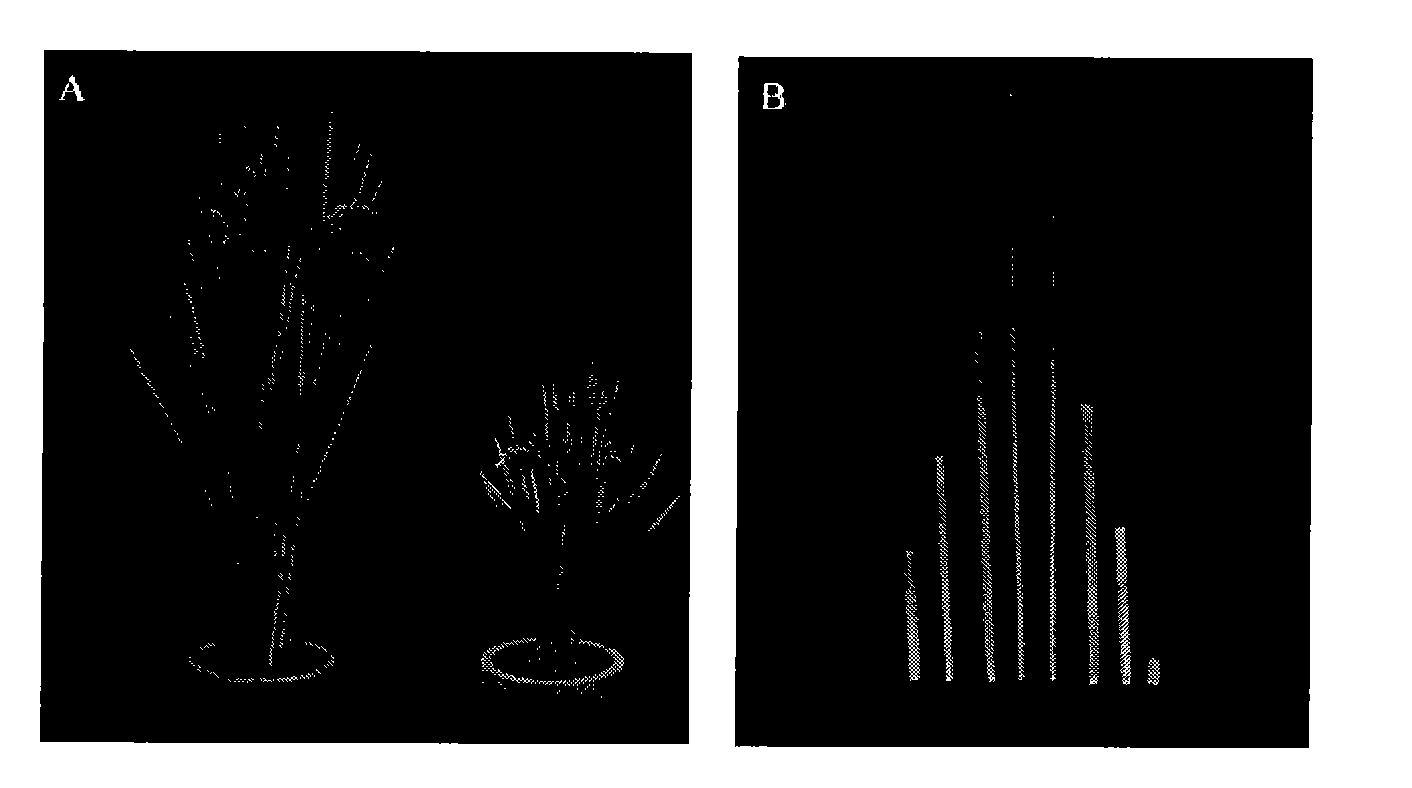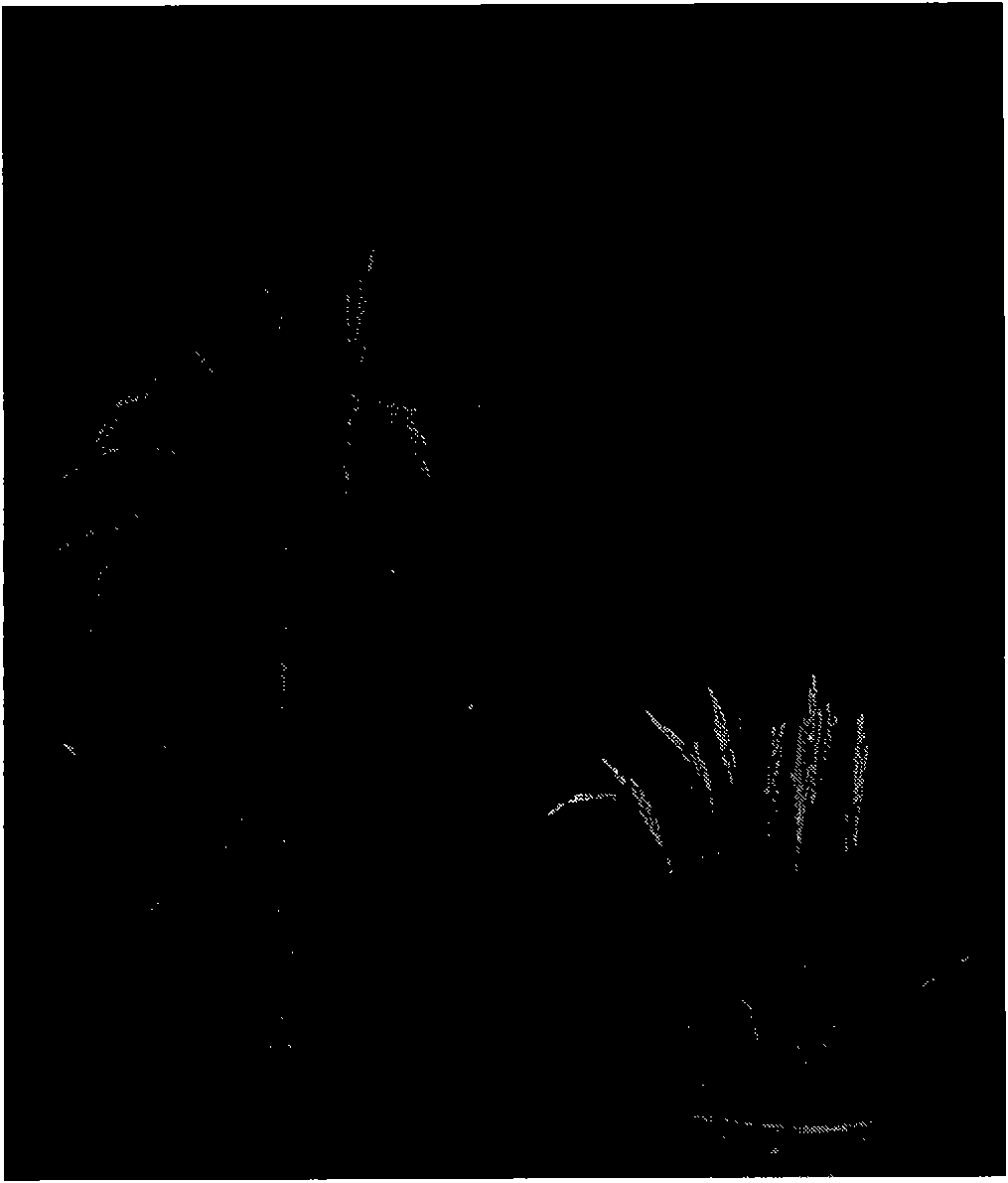Rice dwarf-related protein and coding gene and application thereof
A technology encoding genes and proteins, applied in the fields of application, genetic engineering, plant genetic improvement, etc., can solve the problems of dwarf stalk and flower organ developmental delay, and achieve the effects of enriching the dwarf rice source, shortening the breeding period and improving the breeding efficiency.
- Summary
- Abstract
- Description
- Claims
- Application Information
AI Technical Summary
Problems solved by technology
Method used
Image
Examples
Embodiment 1
[0040] Embodiment 1, the acquisition of rice OsGA20X5 gene
[0041] a) Obtaining and genetic analysis of rice dominant dwarf mutant DD1
[0042] The wild type Wuxiangjing 9983 was provided by Jiangsu Tomorrow Seed Industry Co., Ltd.
[0043] In the transgenic T with japonica rice variety Wuxiangjing 9983 0 A dwarf mutant, numbered GN42, was screened from the generation plants, and T 0 generation seed, T 0 T 1 Generation plants, observe and record T 1 The phenotype and segregation ratio of the generation plants. The results showed that mutant T 1 Generation from the tillering stage showed a height separation of 1:3, and the dwarf trait was co-segregated with the transgenic resistance selectable marker gene hygromycin gene, which indicated that the dwarf trait was heritable. to T 2 generation plants for further genetic analysis, T 2 The ratio of tall stem plants to dwarf stem plants in the generation plants was still 1:3, which was consistent with the genetic performanc...
Embodiment 2
[0069] Embodiment 2, the acquisition of rice overexpressing the OsGA20X5 gene
[0070] a) Construction of pCAMBIA-0sGA20X5 expression vector
[0071] Using the cDNA of wild-type Wuxiangjaponica 9983 as a template, the following primers P1 and P2 were designed to amplify the fragment of the coding region of the OsGA20X5 gene. The sequences of the primers P1 and P2 are as follows:
[0072] P1: A GGATCC ATGCCGGCCTTCGCCGACAT;
[0073] P2: G GAGCTC TTATTGTACTGAAGAATGCT.
[0074] Recognition sites for BamH I and Sac I enzymes were introduced at both ends of primers P1 and P2, respectively.
[0075] The amplified product was purified with the QIAquick Gel Recovery Kit (Qiagen, 28706) according to the product instructions, and then ligated with the pGEM-T EASY vector (Promega, A1360) at 16°C for 8 hours to construct the recombinant vector pGEM-OsGA20X5. Using a 2mm electrode cup, the recombinant vector pGEM-0sGA20X5 was transformed into Escherichia coli DH5α at 2500V, and the trans...
Embodiment 3
[0088] Example 3 Tissue expression characteristics of rice OsGA20x5 gene
[0089] The expression characteristics of OsGA20x5 gene in different tissues were detected by RNA Northern hybridization method. The total RNA of the coleoptile, root, seedling, leaf, inverted stem, lower stem and ear was extracted respectively, and Northern hybridization analysis was carried out according to the method described in the third edition of "Molecular Cloning".
[0090] Experimental results such as image 3 As shown, in addition to not expressing in roots, other tissues including leaf sheaths, coleoptiles, leaves, panicle stems, inverted stems, and ears are all expressed. The expression in ears is the strongest, followed by stems, and leaves, sheaths, and germs The expression level in the sheath was similar, indicating that the expression of OsGA20x5 gene is closely related to the growth and development of rice.
PUM
 Login to View More
Login to View More Abstract
Description
Claims
Application Information
 Login to View More
Login to View More - R&D
- Intellectual Property
- Life Sciences
- Materials
- Tech Scout
- Unparalleled Data Quality
- Higher Quality Content
- 60% Fewer Hallucinations
Browse by: Latest US Patents, China's latest patents, Technical Efficacy Thesaurus, Application Domain, Technology Topic, Popular Technical Reports.
© 2025 PatSnap. All rights reserved.Legal|Privacy policy|Modern Slavery Act Transparency Statement|Sitemap|About US| Contact US: help@patsnap.com



